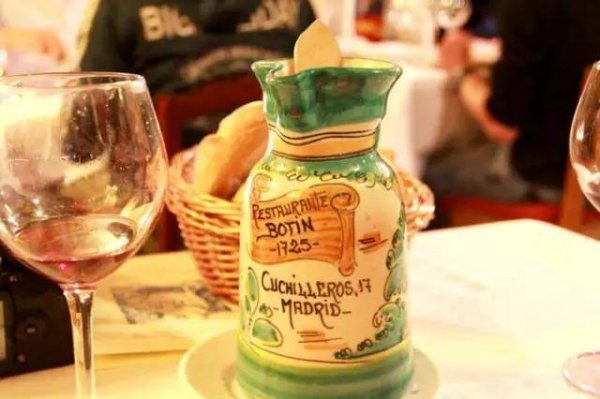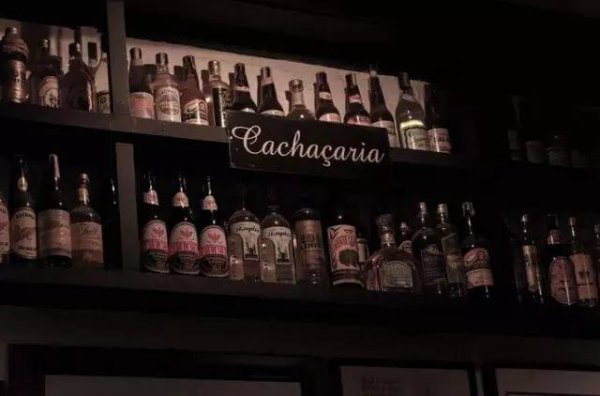In the 2018 Russia World Cup group match, the battle is in full swing. Whether you are a senior fan or a football white, you can find your own happiness in this four-year event. Football and wine are not just a hobby, they are a spiritual symbol that is filled with male temperament. Football is the sweat of a man, and wine is the blood of a man's body. Today we will take stock of the special wines of the 21 World Cup countries. 1. Germany / Icewine Ice wine is also called ice wine, the word comes from the German "EISWEIN". In the winter of 1794, the Franks region of Germany suddenly suffered an early frost. The grapes of the year seemed to be destroyed. The wine farmers smacked the sallows and squeezed the half-frozen grapes, which produced a different wine. Unique flavor. So they called this wine ice wine. Like French Champagne and Scotch Whisky, German ice wine is very famous in the world, not only because Germany is originally the origin of ice wine, but also because of Germany's special climate and brewing process, the quality of ice wine is excellent. 2. England / Cider The status of cider in the world is very important. It can be used as a pre-dinner, as a base wine, and even as a cooking ingredient. In 1066, cider conquered Britain with the Norman dynasty, and there was a clear record of cider in the English monasteries. To date, 45% of the UK's apples are used in cider processing, and there are more than 350 types of apples for winemaking, even more than the British beer. The annual production of British cider is about 500,000 tons, accounting for more than 60% of the EU's total production. It is still the world's largest producer of cider. 3.France / Champagne Champagne is produced in the historic Champagne region of northeastern France and is the world's most famous sparkling wine. It is made from the second fermentation of wine bottles. France has very strict requirements for the natural conditions of producing champagne. The climate is cool and the precipitation is moderate. The soil is mostly chalky soil rich in calcium carbonate, because only the soil rich in minerals and moderate rainfall, suitable temperature, sufficient The sun, constant humidity, can grow the quality grapes that make champagne. 4. Spain / Sangria Spain's Sangri is a sparkling wine from Spain. Suitable for freezing and drinking, the taste is slightly sweet. The wine inherits the spirit of Philadelphia wines. This bloody color symbolizes Spanish bullfighting and paella. 5.Brazil / Kashasa Brazil has a kind of white wine that can be called national wine, that is, Kasasa brewed with sugar cane, which has been brewing in Brazil for more than 500 years. Brazil's Caesar is made from Brazilian special sugar cane as a basic raw material. It is a world-recognized natural and pollution-free green drink. It is recognized as a natural and pollution-free green drink. It has a strong and mellow taste, long and pure fragrance and full color. Hanging cups are rich. 6.Argentina / Malbec Argentina is the largest wine producer in South America and the fourth largest producer and wine consumer market in the world. The famous wine critic Robert Parker rated Argentina as "the most promising wine country." Argentina's "national treasure" grape variety Malbec originated in France, and it is usually used as a supporting role in Bordeaux wines, but now it is carried forward in Argentina. 7. Uruguay / Dana Uruguay is a treasure trove of wines, and Uruguayan wines made from Dana and other grape varieties are impressive and impressive. Dana has been planting in Uruguay for more than 250 years. The wines produced by Dana have very distinctive characteristics and structure. Compared to Dana grown in France or Spain, the Dana wines of Uruguay have a more elegant style, a more supple taste and a more complex level. 8. Sweden / Absolut Vodka Absolut vodka is a world-renowned vodka brand. Although vodka originated in Russia, absolute vodka is produced in Ahus, a small Swedish town with a population of only 10,000. The special winter wheat there gives the absolute vodka high-quality smooth grain characteristics. 9. Portugal / Port Wine Port wine is known as the Portuguese “national wine†and is a reinforced wine. In some people's minds, Port wine is the best reinforced wine. It will add a part of Brandy before the end of the fermentation, so that the port wine will retain the natural sweetness of the grapes. Round and smooth. 10.Poland/Tatanka Speaking of vodka, this wine is often used as a base wine for cocktails, but it is different in Poland. This is Poland's “national wineâ€. The most common way for Poles to drink vodka is "Tatanka", which is to add apple juice to the top of vodka, which is both refreshing and fruit-free. 11. Russia / Vodka Vodka is a traditional Russian alcoholic beverage; vodka is made from grains or potatoes, distilled to a maximum of 95 degrees of alcohol, then diluted to 40 to 60 degrees with distilled water, and filtered through activated carbon to make the wine more crystal clear. It is colorless and light and refreshing, making people feel unsweet, not bitter, and unscrupulous. Only the flame-like stimulation forms the unique characteristics of vodka. Therefore, vodka is one of the most flexible, adaptable and flexible wines among the various bases for cocktails. 12.Belgium / Beer Beer is like Belgium for wine and France for whisky in Scotland. Belgium has made every visitor so surprised by their fanaticism of beer and the important role that beer plays in its national culture. Belgian beer refers to beer made in Belgium. In Belgium, there are many beer produced in the traditional way. Monks in many monasteries, especially the Trapaist monks, used the traditional yeast strains in the monasteries to make ale. 13.Korea / Shochu Korean shochu is a traditional drink distilled from rice and is native to South Korea. It can also be made from barley, sweet potato, cassava and wheat. This shochu tastes like vodka, but has a slightly sweet taste. Its alcohol content is generally about 20%, which is the most common alcoholic beverage in Korea. 14.Mexico / Tequila Tequila is the national wine of Mexico. It is called the soul of Mexico. It began to become known to the world when the Olympic Games were opened in Mexico. This wine is a distilled liquor made from agave as a raw material. The agave plant takes 12 years to mature, and the tequila maker cuts off the outer leaves of the agave to take its center (Pinal), then puts it in the oven for cooking. It is concentrated sweet juice and converts starch into sugar. Tequila is distilled twice in copper single-distillation. It is not ripened in wooden barrels. It is transparent and colorless. It is called WhiteTequila and has a mild taste. Another Gold Tequila is named after light amber. Usually Store in oak barrels for at least one year and taste similar to brandy. 15. Peru / Pisco Cocktail In Peru, every meal begins with a white cocktail. It is the classic cocktail Pisco Sour (Pisco cocktail) that Peruvians are proud of. The white rice drink is covered with a layer of dense white foam. Although the appearance is gentle and fresh, it is a violent stamina. Pisco Sour is the pride of Peruvians. In 2004, the Peruvian government announced that it would set the first Saturday of February each year as the “National Pisco Cocktail Festivalâ€. In 2007, Pisco Sour was recognized as “Peruvian National Cultural Heritage†and is popular in all South American countries. 16.Japan / Sake Sake can be called the "national wine" of Japan, and the wine is exquisitely made like a porcelain bottle for incense, and it is very elegant. This pure rice brewed liquid, the alcohol content is about 15 degrees, ordinary sake is divided into "pure wine" and "this brew", the wine is transparent with corn-like purity, full of room mellow. 17. Australia / bitter beer Victoria Bitter Beer is a favorite beer of Australian origin. It is made by traditional craftsmanship and originated in 1890. In the past 10 years, he has consistently been the recipient of the “Australian Wine Awardâ€. The bitterness of VB is the whole of brewing wine, which is darker than other traditional cooked beer and has a light malt flavor. It has a soft fruity taste and is rich in flavor and not sweet. It is characterized by light color, rich foam, strong hop aroma, heavy bitterness but not long, and pure taste. 18. Nigeria / Palm Wine Drink palm trees in the local area, make a hole in the upper part of the trunk, insert a plastic hose, and connect the container to the bottle. The milky white juice will drip into the bottle. When it is full, it will be covered and put for a few hours. It became a sweet and sour palm wine. This wine has a unique flavor, although it is not as good as artificial wine, but it is as intoxicating as it is. This wine can only be consumed on site and should not be stored for a long time. 19. Tunisia / dried wine Located in North Africa, Tunisia has a long history of winemaking. The cultivation techniques and winemaking techniques of the vines were first brought by the Phoenicians, and later inherited by the Romans, but then the Ottoman banned the winemaking activities, and finally the French revived the wine industry in Tunisia. The people here will dry the harvested Alexander Muscat and produce a citrus-flavored and scented liqueur with a unique taste and a very popular taste. 20. Iceland / Black Dead Wine The traditional Icelandic black wine, brennivin, is a spirit made from potatoes and parsley. People usually call it "black wine." 21. Panama / Sugarcane Juice Spirits The Panamanian National Drink, called Seco Herrerano, is a pure spirit of sugar cane juice that tastes like the vodka's elegant taste and a hint of rum. Although this wine is consumed like rum, the American West Coast bartenders who have tasted it have replaced it with vodka because it is based on juice and blended with cocktails. Which bottle do we open tonight? 



















